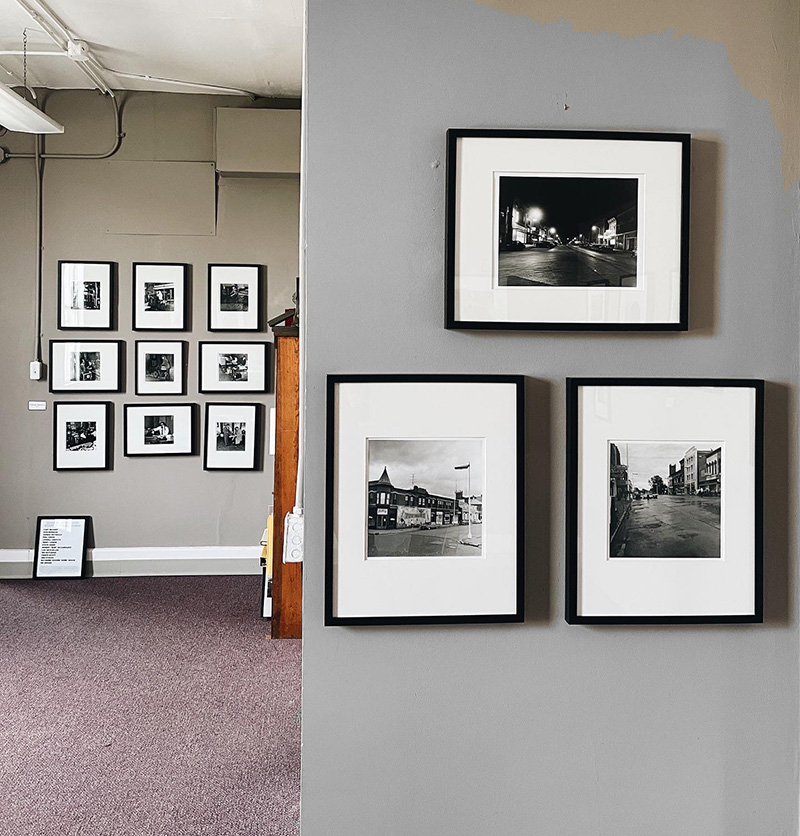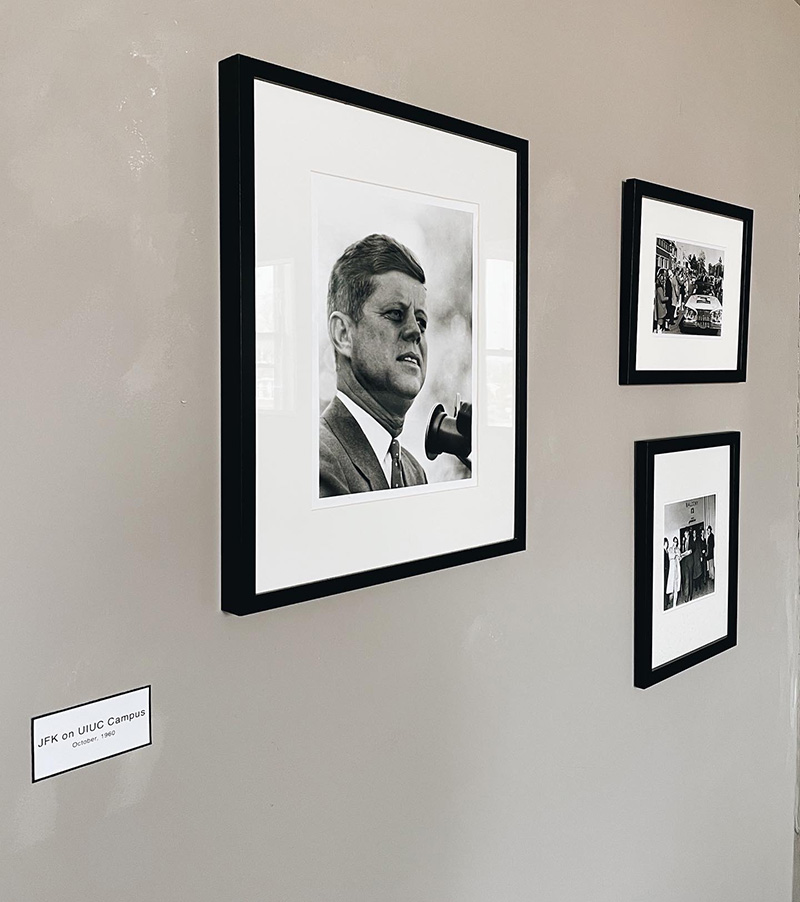The Urbana Museum of Photography’s recent exhibition OLD NEWS: The Archives displays prints of photo negatives processed when the building housed the Champaign-Urbana Courier, which was published from 1877 through 1979. Rather than employing digital scanners and printers, the museum presents the hard work of The Courier staff photographers using the same darkroom and film development techniques that would have been used back then. Silver gelatin prints of downtown Champaign-Urbana, John F. Kennedy speaking at the University of Illinois’ Foellinger Auditorium, businesses like Fannie Mae and Jerry’s IGA, aerial shots of the Univeristy of Illinois Quad, as well as the staff photographers themselves. OLD NEWS: The Archives features all this and more in a striking collection of our community’s evolution. After my viewing of the exhibit, I had the chance to sit down with museum founder and owner Lyosha Svinarski. We spoke about the exhibit and its connection to UMoP’s mission and history.

Photo by Anna Longworth.
“It was very difficult to combine all things together and connect them thematically for the exhibit,” observes Svinarski. He moved from room to room, explaining the steps taken in processing the long-lost photo negatives from the days of The Courier and making prints of them. Old cameras are set up around the museum, all still in working condition. “Every single camera has a history behind it. I haven’t been collecting them—I think they found me. People come to me and say ‘look, I got this, I don’t know what to do with it, but you look like you have good hands—please take it!’” There’s a four-by-five inch camera, a five-by-seven, a nineteen-by-five. Svinarski notes that the time difference between two of the cameras is about two centuries. While digital photography has the advantage of unlimited pictures, he suggests that having a finite amount of shots on a film camera makes for a different and perhaps more rewarding artistic experience.
Svinarski worked as a pediatrician before deciding to devote himself to his lifelong love of photography. “I pretty much said, ‘you know what? I think I’ll just do what I like.’ I didn’t call myself an artist—I just started doing what I really love.” He founded the Urbana Museum of Photography in 2017, describing it as a sanctuary for film photographers focused on art. “They ask, ‘why are you not showing digital work?’ Well, because I’m not. (laughs) It’s my museum. Go to a car dealership and ask them, ‘why are you not selling this car?’ They’ll kick you out.” While the museum has displayed the work of photographers from China, Italy, Portugal, Russia, and beyond, its primary focus is on the talent of Champaign-Urbana artists. In addition to its gallery, the museum’s services include film development, scanning, and custom silver gelatin prints. Seeing photographs taken in the present day developed in the same style as those of The Courier from decades past perfectly captures the timelessness of film photography that the museum strives to preserve.
Below is the JFK on UIUC Campus, series from October 1960. These photos were taken by The Courier’s sole Black photographer Raymond Eugene “Gene” Suggs.

Photo by Anna Longworth.
When discussing the importance of the museum and its mission, Svinarski shared this story:
“One day I was at my friend’s house and saw a photo album. I really like photo albums because I don’t know the people in them, so I just see backgrounds, hairstyles, fashions, and interiors. That’s what I’m interested in. I grabbed the book and started flipping through it. Then I found a gap, and when I asked my friend when the last photo was taken, she said 1978. So this photo album had not been updated since 1978, and that’s understandable. Usually kids will pick up the photography, but then digital came in. Basically, since the late 1990s, everyone stopped doing family albums. Now everything’s in the iCloud, but there’s nothing in the photo albums. What happened to these five-by-seven photographs that stick to the corners, where you flip the pages and feel the dust coming out?”
Below is the Downtown Urbana series taken by a Courier staff photographer during the 1960s.

Photo by Lyosha Svinarski.
OLD NEWS: The Archives bridges the gap between The Courier and the Urbana Museum of Photography, as the time that these photo negatives spent locked in a room and forgotten is a part of their shared history, and by extension, the history of Champaign-Urbana. Camera technology and photographic techniques have come a long way, but the motivation behind them remains the same, and that is to capture life as it is in the moment. As the museum’s website puts it, “history of photography is the history of people and the history of photographic techniques is the history of our progress as a humanity.” Whether or not you are a photographer, a visit to this exhibit is strongly encouraged, as a glimpse of the past can shine new light onto the present.
OLD NEWS: The Archives
Through June 25th
Urbana Museum of Photography
113 N Race St, Ste B
Urbana
Call 217-649-5605 to schedule your visit.








